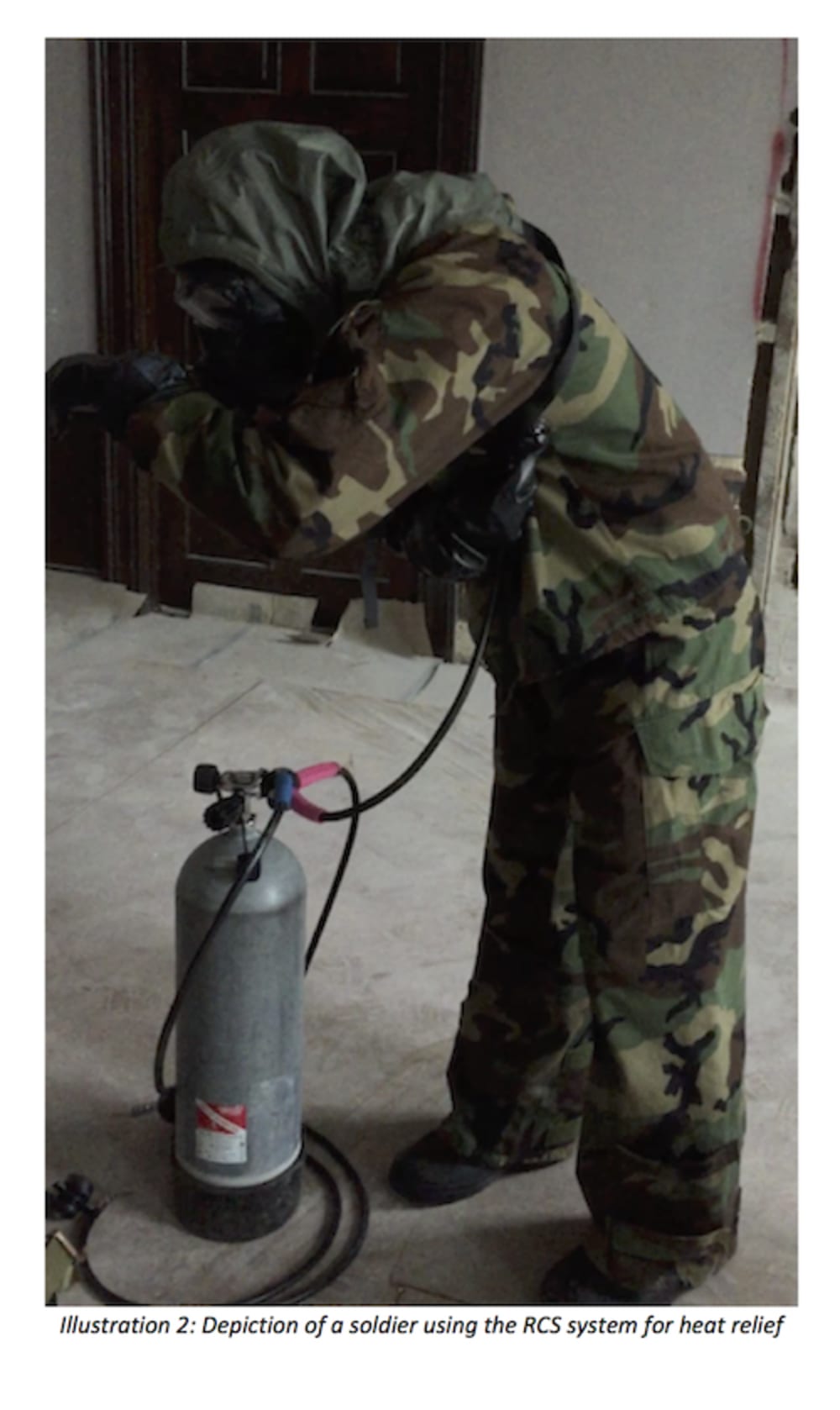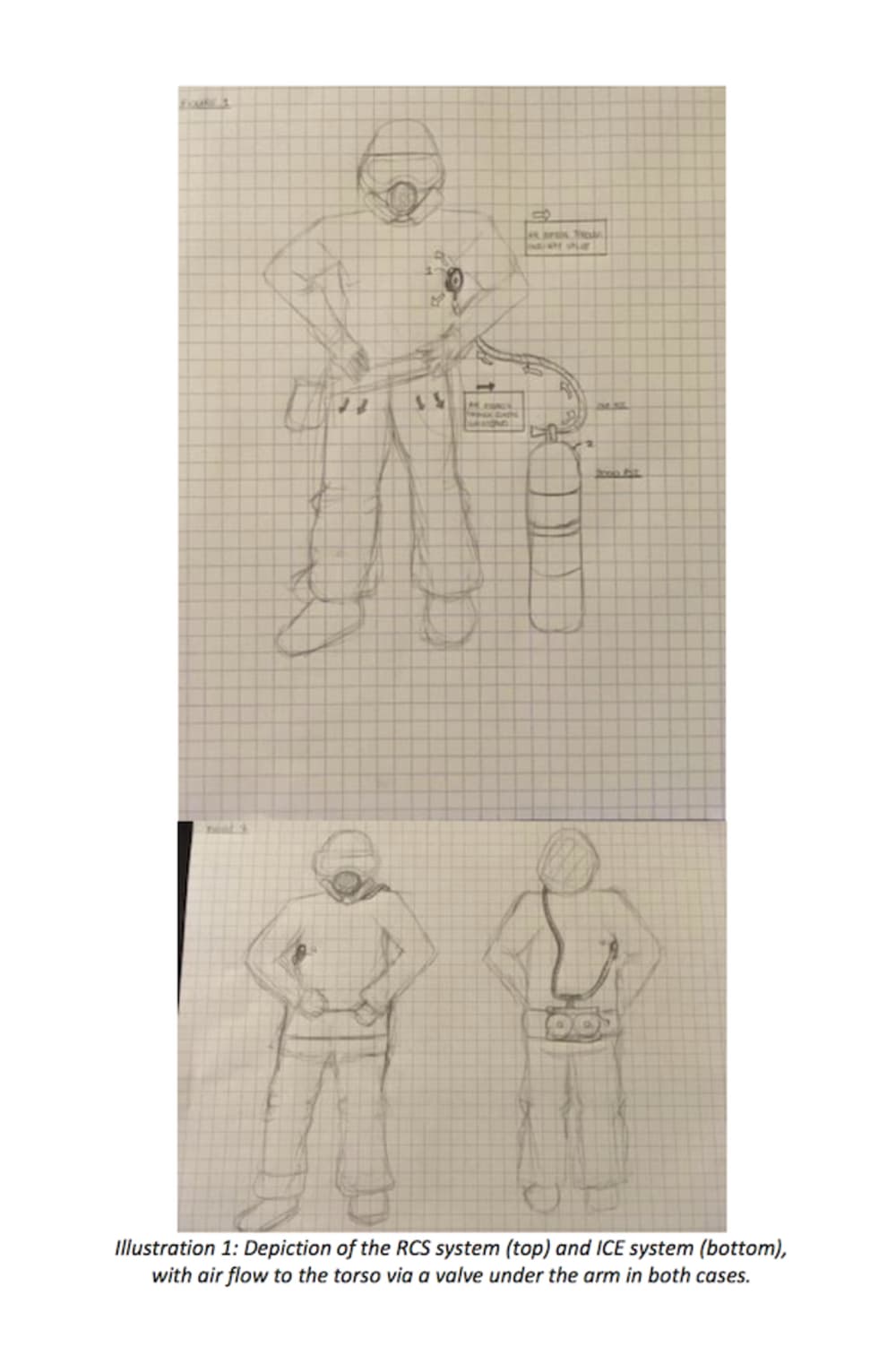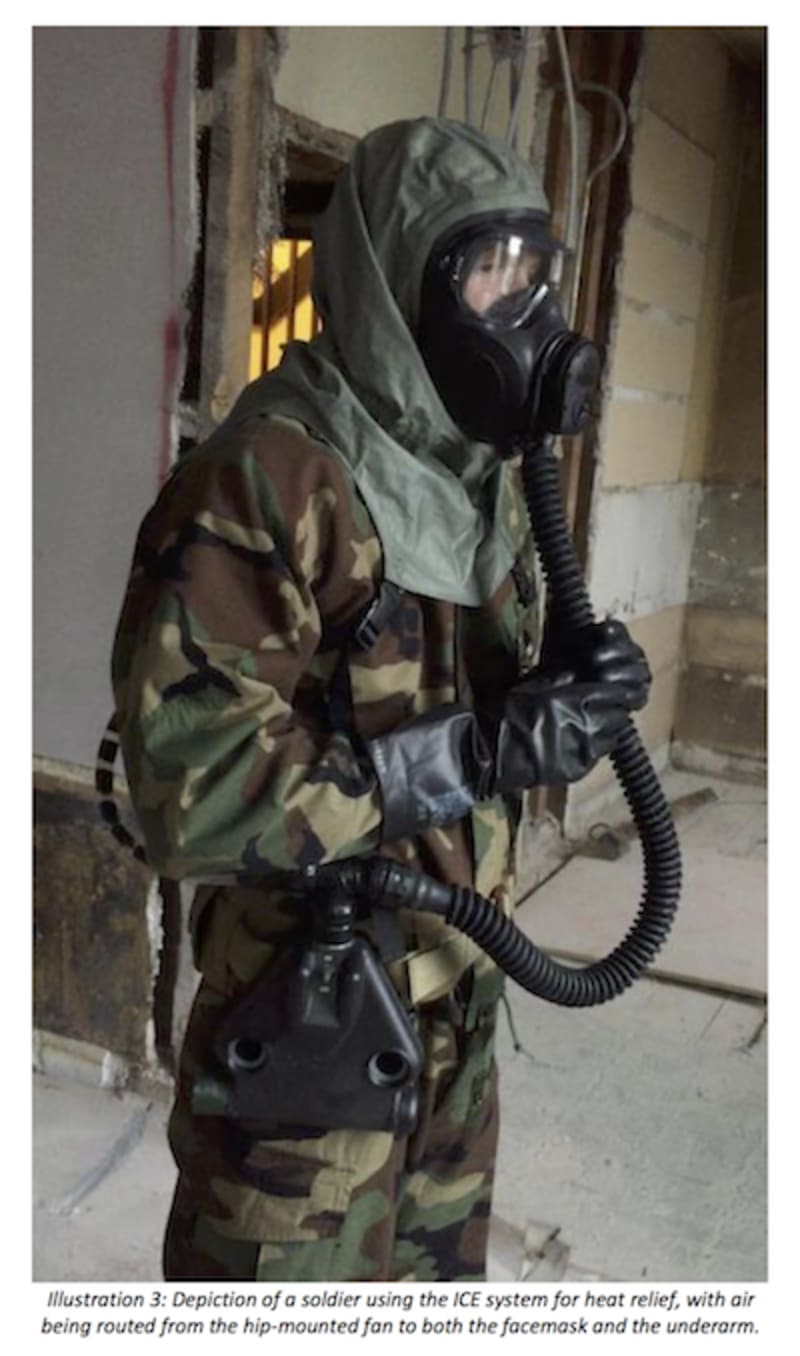The Rapid Cooling Station (RCS) and Integrated Cooling Ensemble (ICE) together provide a comprehensive, cheap, and easy-to-implement solution to one of the largest issues facing soldiers, firefighters, and other suited responders in the field today: heat management. Based on the requirements of protective equipment, significant heat builds within a subject’s suit even under moderate conditions and effort. In order to remove this layer of hot air and keep the subject cool, two methods are proposed.
The first, called RCS, is the “stationary” solution. In this scenario, a compressed air source accompanies the operator on scene. When the operator seeks heat relief, he or she will move to the location of the compressed air source and connect a hose from the air source to a one-way valve attached to the operator’s suit. As the air enters the suit, it circulates throughout it and replaces the warm layer of air with fresh, cool air. This provides relief to the operator and allows him or her to remain effective and safe in the field for longer durations of time.
The second method, called ICE, is the “mobile” solution, and is relevant to scenarios where the operator is carrying a filtered, fan-powered air source (common to any situation requiring a facemask). The solution proposes the installation of a “T”-junction and ball valve on the outlet of the mobile air source that will allow the operator to re-route air to the torso. As the air sources typically produce more airflow than is needed for the mask alone, it makes sense to utilize the excess air to cool the body via forced convection.
Innovation and Manufacturability:
RCS and ICE leverage an innovative combination of existing parts to create an immense gain in operational capability. The effective use of these systems will allow for a paradigm shift in the usage of industrial, military, and law enforcement suits and an enormous expansion of tactical capabilities, while also serving as a proof-of-concept for forced-air circulation in the next generation of these suits. The addition of a T-junction adapter to re-route air using the mobile system is minimally disruptive to the current manufacturing and wearing processes. The inlet valve is a 3-inch diameter cylinder that can be built into the suit at the end of the manufacturing line. Due to their small nature, these will not pose an issue for being worn. Additionally, the valve is commercially used in SCUBA drysuits and the T-junction adapter can easily be machined or purchased. Because the required hardware components are standard to industry, these components are currently able to be mass-produced.
Ease of Use:
The only operator action required to take full advantage of either system is the connection of a single hose to a valve - no other monitoring or manipulation is required. The low-volume continuous flow from ICE will provide both heat control and comfort to the operator. RCS will provide a higher flow-rate of air for rapid cooling needs. The suit modification will be otherwise unnoticeable to the operator.
Video
Like this entry?
-
About the Entrant
- Name:Eric Hinterman
- Type of entry:teamTeam members:Phil Ebben [MIT MBA/SM Candidate] Steven Link [MIT MBA/SM Candidate] Barret Schlegelmilch [MIT MBA/SM Candidate]
- Software used for this entry:Solidworks / Excel
- Patent status:none








